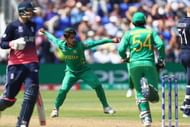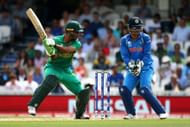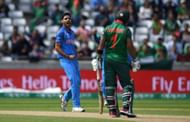The 2017 edition of the ICC Champions Trophy is done and dusted. Pakistan were crowned the champions after they defeated their arch-rivals India in the final showdown. And fittingly, the two best teams were in the final and the better team on the day won the game.
At the end of it all, the tournament ended up as a huge success. There was a criticism for the Champions Trophy as to why there needs to be another multi-nation ODI tournament when the ODI World Cup already exists. But this edition has certainly made a point for it to remain in the cricketing calendar once every four years.
ODI cricket was the beneficiary after all the hard fought matches and the 50-over format has got a much-needed revival after the advent of T20 cricket following the Champions Trophy. This tournament has laid the foundation of how the ODI cricket can be played in the future and also in the World Cup 2019 that will be held in England.
Here’s an analysis of the top 5 takeaways for ODIs from Champions Trophy 2017:
#1 Cautious starts
Throughout the tournament, the teams were inclined towards making cautious starts up front. Although the white ball didn’t swing as much as it was expected in England, the openers showed respect to the new ball bowlers.
The best opening pair amongst all was Shikhar Dhawan and Rohit Sharma. They had two century partnerships of 136 and 138 in which they had scores of 46 and 48 respectively at the 10-over mark. The new balls at either end generally stopped moving around after five to six overs at each end and by playing out the initial burst from the pacers, the batsmen later upped the ante.
#2 Keeping wickets for the final 10 overs
India and England were the two best batting sides in the tournament and both got scores in excess of 300 while batting first. They, in fact, showed if you don’t lose too many wickets during the middle overs, any score is achievable in the last 10 overs.
India had players like MS Dhoni, Kedar Jadhav and Hardik Pandya who came good during the slog overs while for England, Jos Buttler and Ben Stokes did the damage at the death. The two different balls at either end don’t wear out a lot and it becomes easy to smack the ball out of the park.
#3 Mystery in the bowling attack
The teams that did not have a mystery quotient in the bowling line-up were hurt badly. Whichever teams had variety in the armoury were the ones that moved forward. If the bowling attack is monotonous, it gets easy for the batsmen to attack.
The mystery doesn’t necessarily mean to possess mystery spinners. It can also mean to have bowlers who can reverse the ball like Hasan Ali did for Pakistan. Bhuvneshwar Kumar and Jasprit did the other job well of bowling yorkers and slower balls at the death and that worked well for India.
#4 One sheet anchor inning
If you look at the top run-getters of the tournament, they all played the anchor role pretty well. Shikhar Dhawan, Rohit Sharma, Joe Root, Kane Williamson all got big hundreds and guided their teams to either huge scores batting first or chasing down targets.
Even in the final, Fakhar Zaman scored a superlative hundred and the whole Pakistani innings revolved around him. Just like the aforementioned players, he built the platform by staying at the crease until the 30th over from where the lower middle-order took the score over 300.
#5 Bowlers can win you matches
After the advent of T20 cricket, the 50 overs format of the game was shifting more and more in favour of the batsmen. During the initial phase of the Champions Trophy as well, the batsmen dominated and there were scores in excess of 300 consistently.
But as the tournament progressed, the bowlers came to the fore. If we take the example of the two finalists India and Pakistan, both teams won matches due to their strong bowling performances. While bowling first, they restricted oppositions to mediocre scores and then it became easy for the batsmen to chase those down in the semis.
Follow IPL Auction 2025 Live Updates, News & Biddings at Sportskeeda. Get the fastest updates on Mega-Auction and cricket news





